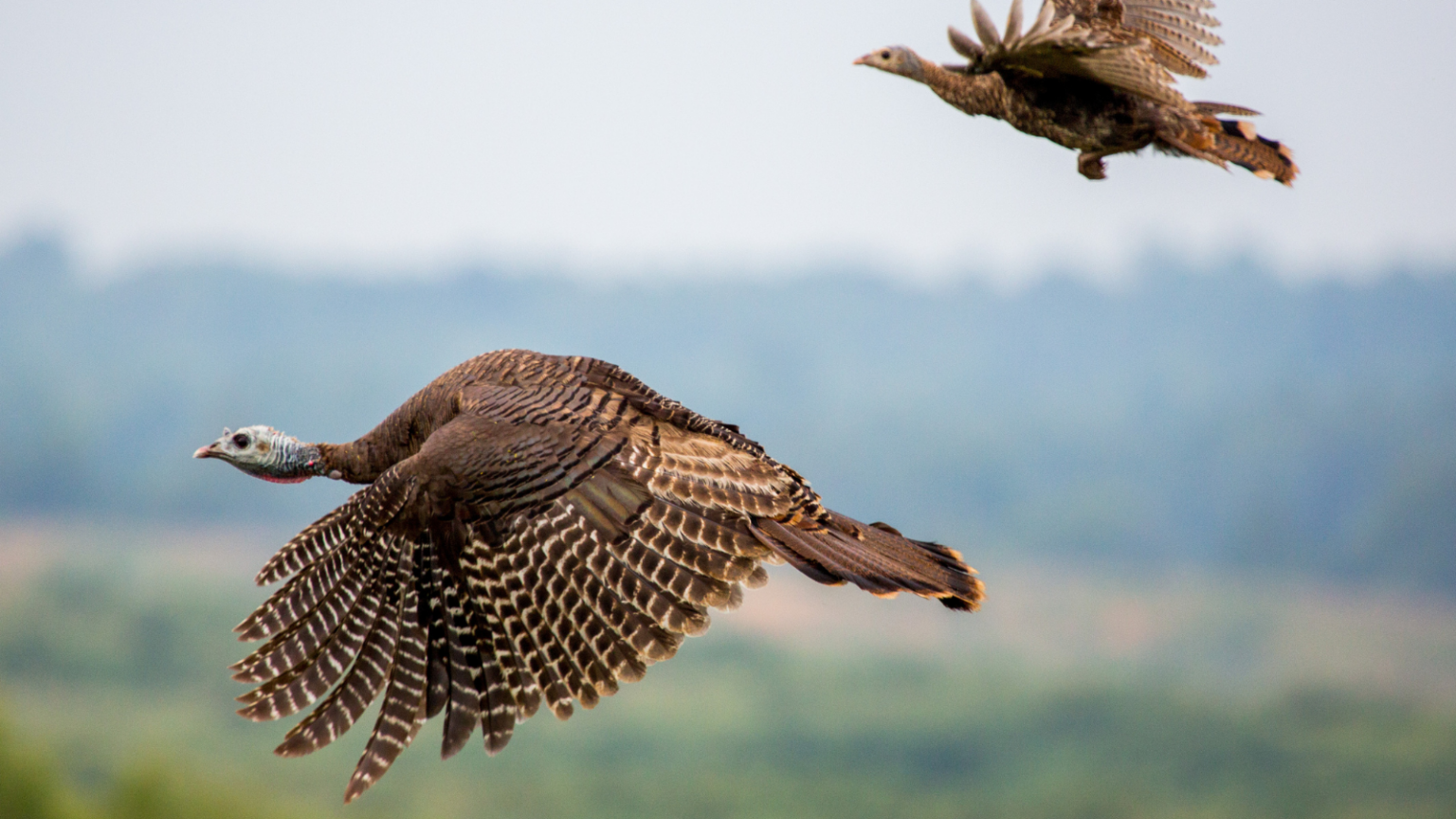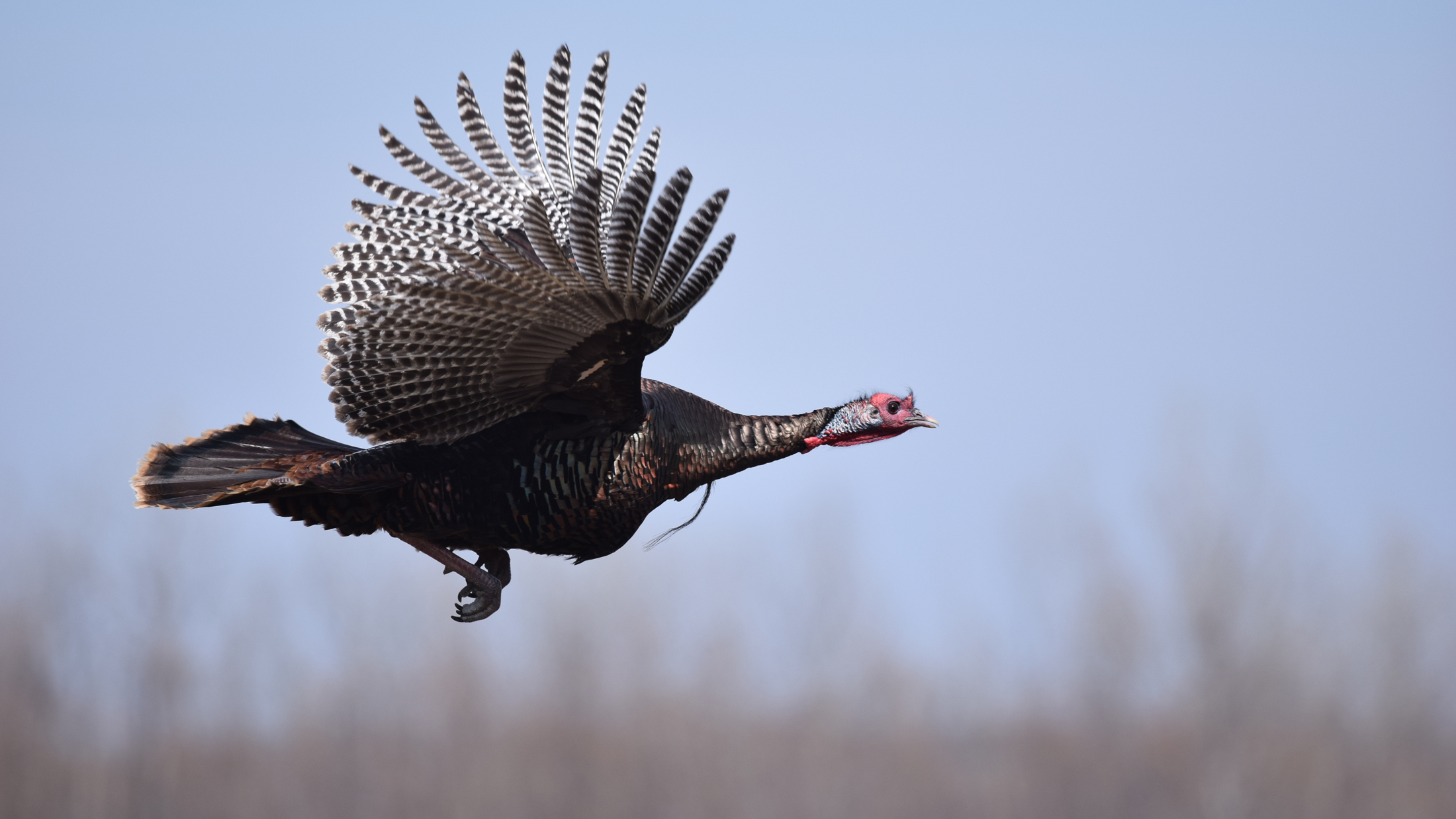Ever wondered if turkeys can actually soar through the skies like other birds? Well, buckle up because we're about to dive deep into the world of turkey flight. If you’re here, chances are you’re curious about whether these big birds can take to the skies and how high they can go. Let’s explore this feathered mystery together!
Let’s be real, turkeys have a bit of a reputation problem. Most people think they’re just big, clumsy birds that waddle around farms all day. But guess what? Turkeys can actually fly! Yep, you heard that right. These birds aren’t just ground-dwellers; they’ve got some serious aerial skills. So, if you’ve ever asked yourself, "Do turkeys fly high?" we’ve got the answers you’re looking for.
In this article, we’ll break down everything you need to know about turkey flight. From how high they can fly to why they don’t spend all day in the clouds, we’ve got you covered. Stick around because this is going to be a wild ride—or should I say, flight?
Read also:Valerie Stevenson Cause Of Death Unveiling The Truth Behind A Legacy
Table of Contents
- Turkey Biology: Understanding Their Wings
- Domestic vs Wild Turkeys: Flight Differences
- How High Can Turkeys Fly?
- Flight Speed: How Fast Do Turkeys Go?
- Why Do Turkeys Fly?
- Common Obstacles for Flying Turkeys
- A Brief History of Turkey Flight
- Debunking Common Turkey Flight Myths
- Fun Facts About Turkey Flight
- Wrapping It All Up
Turkey Biology: Understanding Their Wings
Let’s start with the basics, shall we? Turkeys, both wild and domestic, are equipped with wings designed for short bursts of powerful flight. But here’s the thing—wild turkeys have a significant advantage over their domesticated cousins. Wild turkeys have strong muscles and lightweight bodies that make them excellent short-distance flyers. On the flip side, domestic turkeys are bred to be, well, chunky. Their hefty size makes it nearly impossible for them to take off.
Wild turkeys, on the other hand, have wings that span about 4-5 feet. Their feathers are specially designed for quick takeoffs and landings, allowing them to escape predators in the blink of an eye. So, biology plays a huge role in determining whether a turkey can fly and how high it can go.
Key Features of Wild Turkey Wings
- Large, strong wings for short bursts of speed.
- Feathers designed for agility and quick maneuvers.
- Muscles built for explosive power during flight.
Domestic vs Wild Turkeys: Flight Differences
Now, let’s talk about the big divide between domestic and wild turkeys. Domestic turkeys are bred for one thing—size. They’re engineered to be big and meaty, which is great for your Thanksgiving dinner but not so great for flying. Domestic turkeys can barely get off the ground, let alone reach any significant height.
Wild turkeys, however, are a different story. They rely on their ability to fly to survive in the wild. Their lighter bodies and powerful wings allow them to reach impressive heights when needed. So, if you’re wondering, "Do turkeys fly high?" the answer depends on whether you’re talking about a wild turkey or a domestic one.
Why Domestic Turkeys Can’t Fly
- Excessive weight due to breeding.
- Weak flight muscles from lack of use.
- Shorter wings compared to wild turkeys.
How High Can Turkeys Fly?
Alright, here’s the big question—how high can turkeys actually fly? The answer might surprise you. Wild turkeys can reach heights of up to 40-50 feet in the air during a single flight. That’s pretty impressive for a bird that spends most of its time on the ground. They use these short bursts of flight to escape predators or reach high perches in trees.
But here’s the catch—turkeys aren’t built for long-distance flying. Their bodies are designed for quick, powerful bursts rather than sustained flight. So, while they can reach impressive heights, they can’t stay airborne for very long.
Read also:Where Is Zach Justice From Unpacking The Story Behind The Rising Star
Factors Affecting Flight Height
- Wind conditions.
- Body weight and size.
- Purpose of the flight (e.g., escaping predators).
Flight Speed: How Fast Do Turkeys Go?
Speed is another factor that sets turkeys apart from other birds. Wild turkeys can reach speeds of up to 55 miles per hour during short bursts of flight. That’s faster than most cars drive in urban areas! So, while they may not be able to fly high for long periods, they sure can zip through the air when they need to.
Domestic turkeys, however, are a different story. Their lack of flight muscles and excessive weight means they can barely get off the ground, let alone reach high speeds. So, if you’re hoping to see a domestic turkey zooming through the sky, you might be disappointed.
Comparing Turkey Flight Speeds
- Wild turkeys: up to 55 mph.
- Domestic turkeys: barely off the ground.
Why Do Turkeys Fly?
Turkeys don’t just fly for fun (well, maybe sometimes they do). Their ability to take to the skies is crucial for survival. Wild turkeys use flight to escape predators, reach high perches in trees for roosting, and cover short distances quickly. It’s a vital skill that helps them thrive in the wild.
Domestic turkeys, on the other hand, don’t have the same survival pressures. They’re usually kept in controlled environments where they don’t need to worry about predators. As a result, their flight skills have diminished over generations of selective breeding.
Common Reasons Turkeys Fly
- Escaping predators.
- Reaching high perches for safety.
- Covering short distances quickly.
Common Obstacles for Flying Turkeys
Even wild turkeys face challenges when it comes to flying. Their large size and relatively short wings mean they can’t sustain flight for long periods. Additionally, environmental factors like wind and weather can make flying difficult. But despite these obstacles, turkeys have adapted to make the most of their limited flight capabilities.
Domestic turkeys, unfortunately, don’t have the same adaptability. Their excessive weight and lack of flight muscles make it nearly impossible for them to take off. So, while wild turkeys can still soar to impressive heights, domestic turkeys are stuck on the ground.
Overcoming Flight Obstacles
- Using wind currents to their advantage.
- Finding safe perches to rest during flight.
- Adapting to changing weather conditions.
A Brief History of Turkey Flight
Turkeys have been around for millions of years, and their ability to fly has played a crucial role in their evolution. Ancient turkeys were much smaller than the ones we see today, and they relied heavily on flight to survive. Over time, however, selective breeding has changed the game for domestic turkeys, leaving them grounded while their wild cousins continue to take to the skies.
So, if you’re wondering why turkeys can’t fly as well as they used to, the answer lies in human intervention. Our desire for bigger, meatier birds has come at the cost of their flight capabilities.
Evolution of Turkey Flight
- Ancient turkeys relied heavily on flight for survival.
- Selective breeding has reduced flight capabilities in domestic turkeys.
- Wild turkeys continue to thrive thanks to their natural flight skills.
Debunking Common Turkey Flight Myths
There are plenty of myths out there about turkey flight. Some people believe that turkeys can’t fly at all, while others think they can soar as high as eagles. Let’s set the record straight and debunk some of these common misconceptions.
Myth #1: Turkeys can’t fly. Wrong! Wild turkeys are capable of short bursts of powerful flight, reaching heights of up to 40-50 feet.
Myth #2: Turkeys can fly as high as eagles. Not even close. While turkeys are impressive fliers for short distances, they can’t compete with birds like eagles when it comes to sustained flight.
Top Turkey Flight Myths
- Turkeys can’t fly at all.
- Turkeys can soar as high as eagles.
- Domestic turkeys can fly just as well as wild ones.
Fun Facts About Turkey Flight
Here are a few fun facts about turkey flight that might surprise you:
- Wild turkeys can fly up to 55 mph during short bursts.
- Turkeys use their ability to fly to escape predators and reach high perches.
- Domestic turkeys are bred to be too heavy to fly, making them perfect for your Thanksgiving dinner.
Wrapping It All Up
So, there you have it—the truth about turkey flight. Wild turkeys can indeed fly high, reaching heights of up to 40-50 feet during short bursts of powerful flight. Their ability to soar through the skies is a crucial survival skill that has helped them thrive in the wild. On the other hand, domestic turkeys are bred to be too heavy to fly, leaving them grounded and perfect for your holiday table.
Now that you know the facts, why not share this article with your friends and family? Who knows, you might just impress them with your newfound turkey knowledge. And if you have any questions or comments, feel free to leave them below. We’d love to hear from you!


